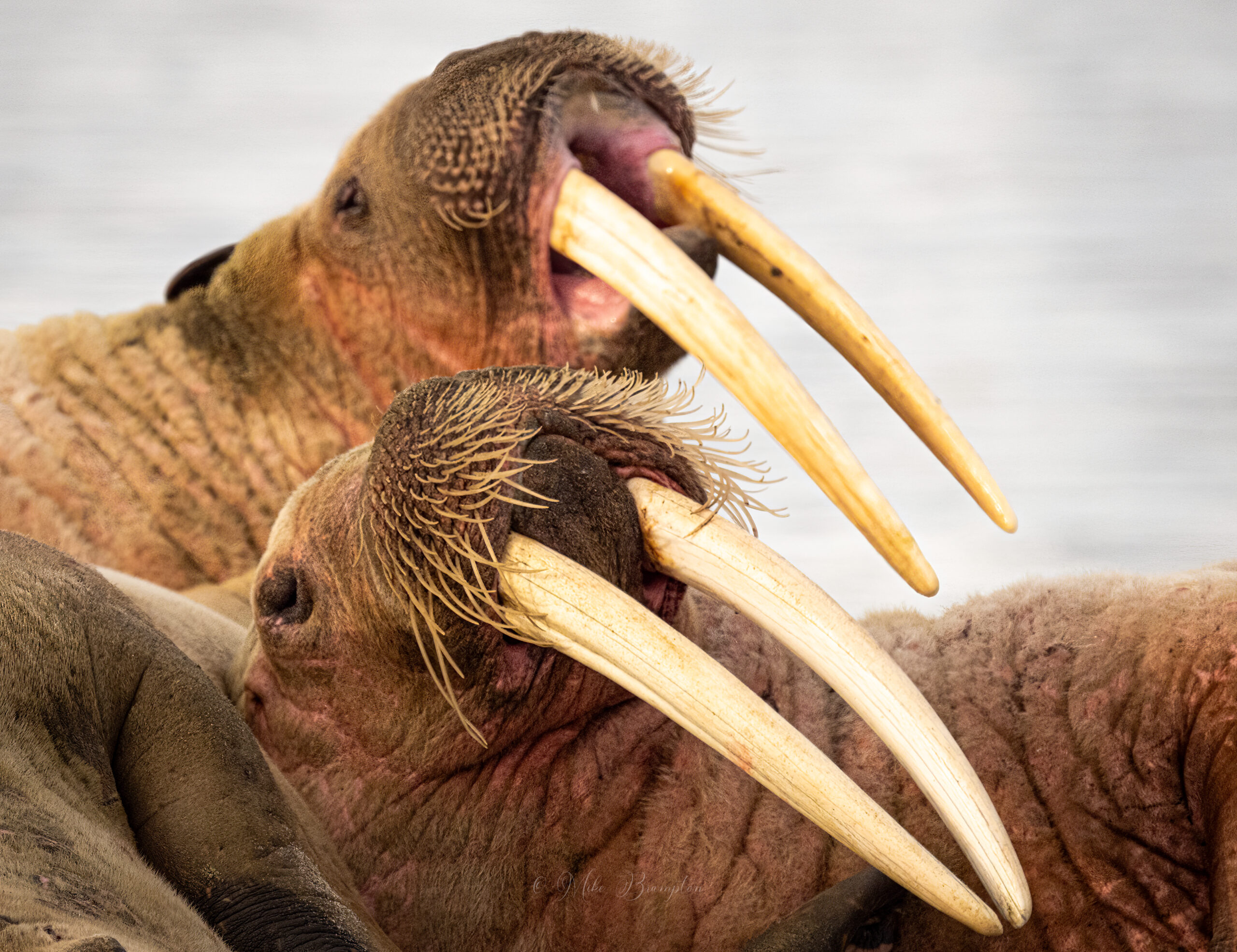Read part 1 of this expedition journal here.
As we navigated, we stopped at Danskøya, where two field police officers stationed for the summer gave us a wave. Then, at Virgohamna, we stepped onto land to explore the remains of Arctic airship expeditions. The ghostly relics of past explorers hinted at the bold and often tragic attempts to conquer the far north by air.
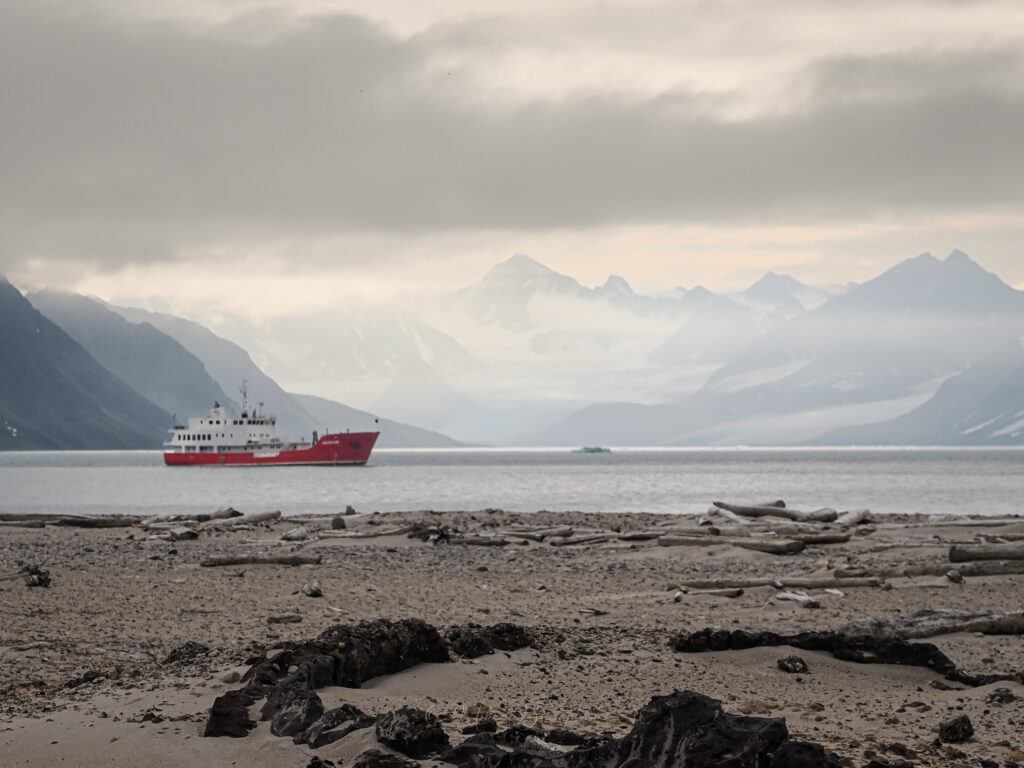
Further along, Amsterdamøya greeted us with a scent before we even saw its inhabitants. The unmistakable, pungent smell of walruses filled the air. As we rounded the bend, we saw them—dozens of massive, blubber-laden creatures piled together on the beach, snorting, belching, grunting, farting, and jostling for space. Some barely stirred as we approached, others raised their heads briefly before flopping back down, unbothered by our presence.
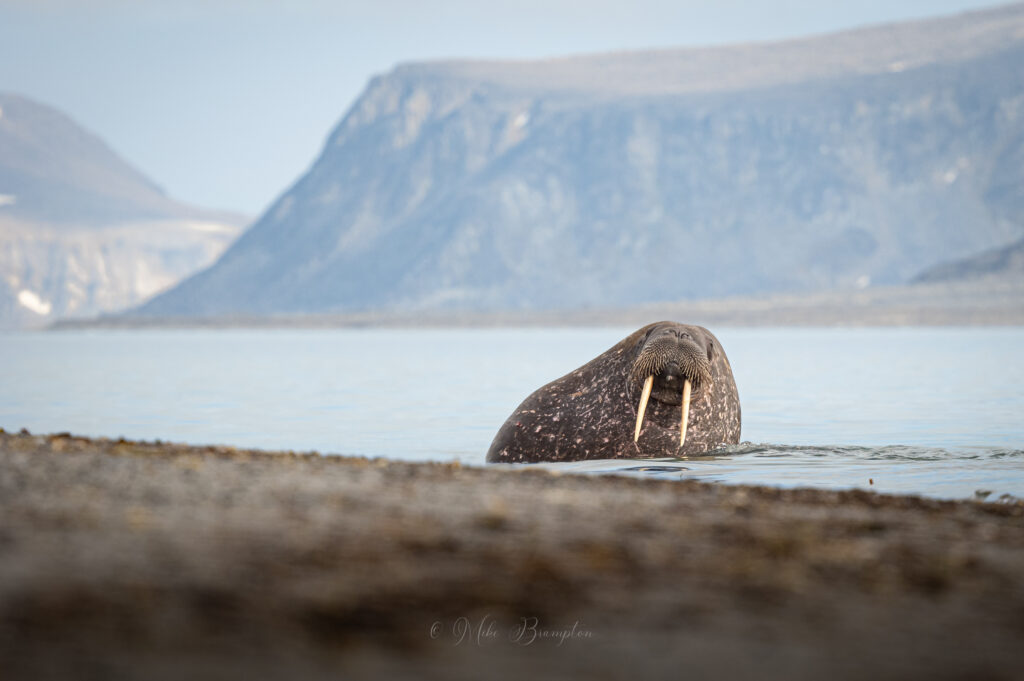
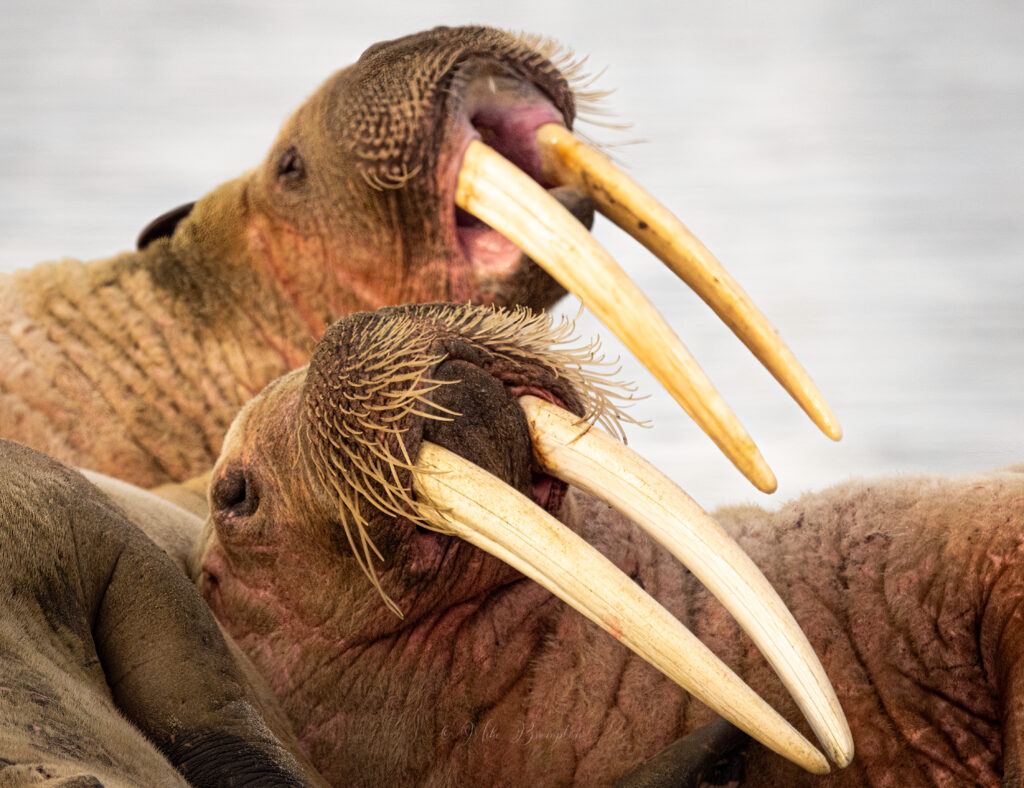
From there, we ventured into open waters, heading north toward the fabled sea ice. The Arctic stretched ahead, endless and mysterious. The weather held, but as we pressed onward, fog began to descend. Ice floes drifted past us, forcing us to slow our pace. This was the true north, the edge of the world, and the journey was anything but predictable.
At 81.5 degrees north, we had a decision to make. The ice edge was farther than expected, and we wouldn’t reach it. Turning south, spirits remained high—especially when we celebrated with an impromptu Arctic swim. The shock of the frigid water stole my breath, but the exhilaration was unforgettable.
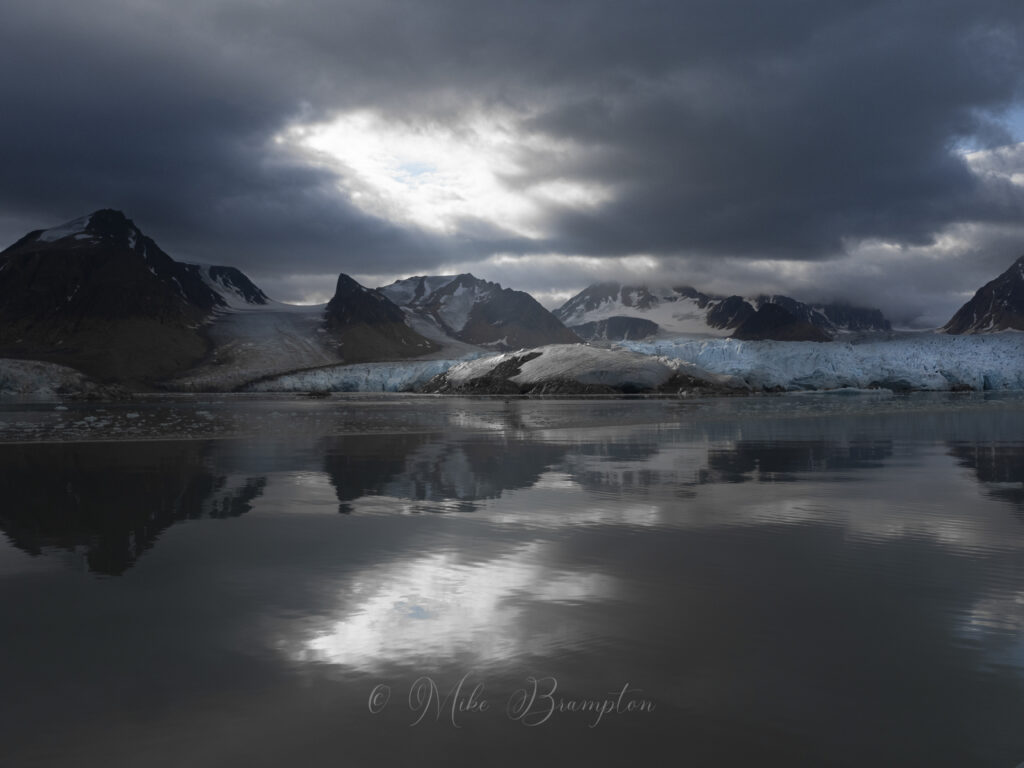
Peek-a-Boo Bear and the Edge of the World
With the ice pack out of reach, we adjusted course eastward toward Foynøya—a name unfamiliar to most maps but holding a special place in Arctic history. This tiny island is near where Umberto Nobile’s airship Italia crashed in 1928, triggering a legendary rescue mission.
The island itself is a rugged strip of rock, no more than 10 kilometers long and barely a kilometer wide. At one end, a colony of female walruses and their young lounged on the shore, their ivory tusks gleaming. The back of the island was littered with driftwood, remnants of trees that had traveled thousands of kilometers across Arctic waters from Siberia. A towering rock at the northern tip housed nesting Black Guillemots, Little Auks, and Fulmars.
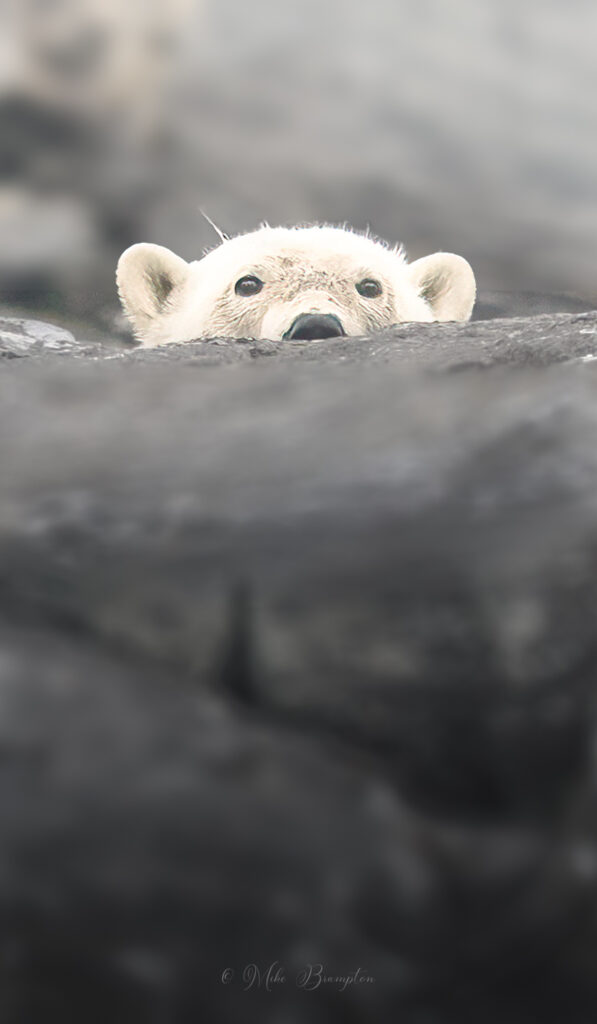
And then—there it was.
A flicker of movement behind a rock. First, just a pair of ears. Then, a head. A nose. Eyes. A polar bear peered over, watching us as intently as we watched him.
For over an hour, we played a silent game of peek-a-boo. The bear would disappear, then reappear, cautiously assessing us from behind his rocky perch. It was a rare and almost comical moment, highlighting the intelligence and curiosity of these apex predators.

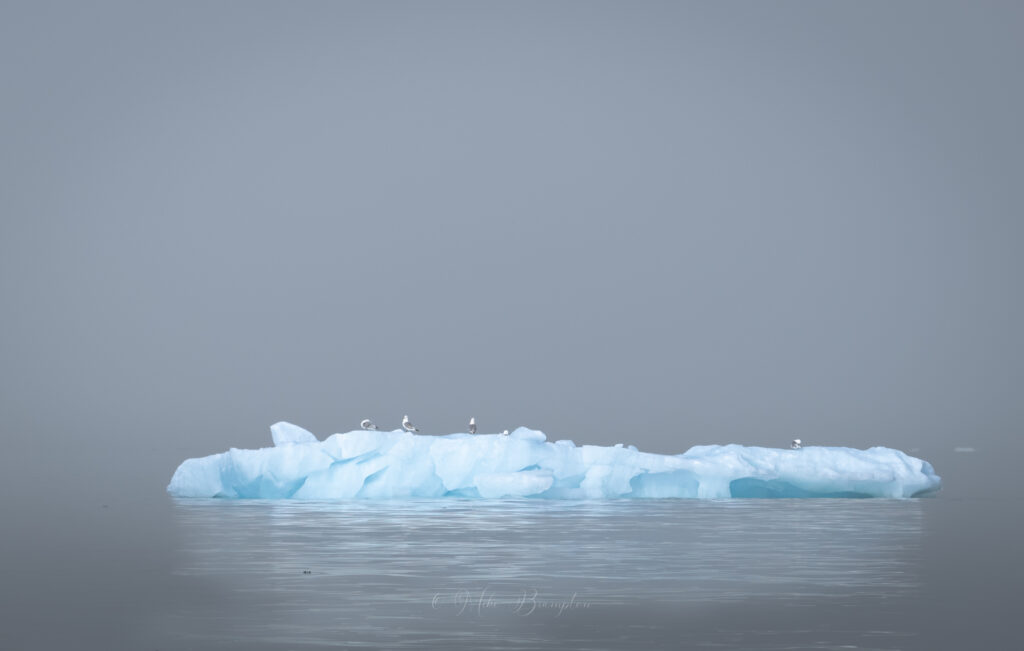
Kvitøya: The White Island
If Foynøya felt remote, Kvitøya is something else entirely. Known as “The White Island,” it is a vast, ice-covered expanse nearly 40 kilometers wide. Few have set foot here—it is isolated, wind-swept, and shrouded in Arctic history.
It was on Kvitøya that the remains of Salomon Andrée’s doomed 1897 expedition were found, more than three decades after he and his companions vanished. Their attempt to reach the North Pole by hydrogen balloon had ended in tragedy, and their final camp remained frozen in time.
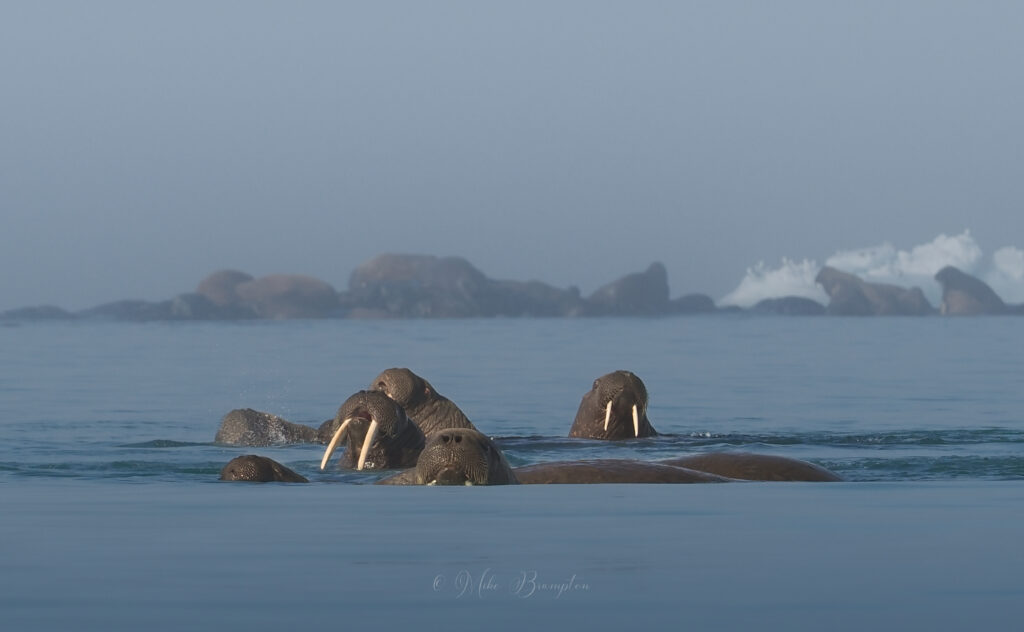
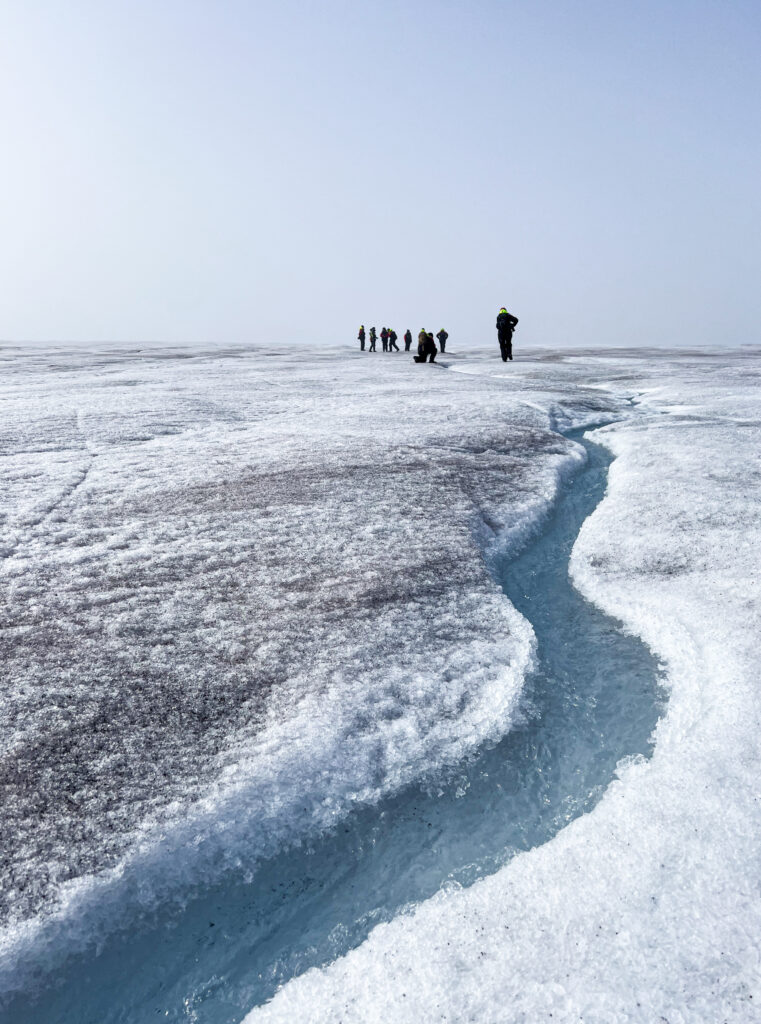
Circumnavigating the island, we spotted more walruses and another bear moving ghost-like through the mist. Then came the moment we had been hoping for—a chance to step onto the ice itself.
Carefully, we landed and took a brief, cautious walk across the ice cap. Every step was a reminder of where we were—one of the most remote and untouched places on Earth. With an ever-present awareness of bears that could emerge at any moment, we stayed vigilant, soaking in the eerie silence.
As the Vikingfjord pulled away, I couldn’t help but feel that we had ventured into the heart of the Arctic wild, a place where few had been and where nature remained as it always had—unforgiving, unpredictable, and breathtakingly beautiful.

